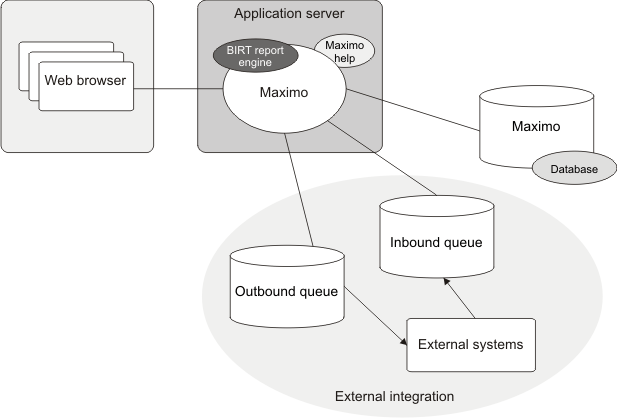A basic system configuration consists of a single instance of the system running on an application server. That server connects to a single instance of the database that is available on a database server.
If the integration framework is also configured for deployment, then you must set up additional messaging queues. The additional queues enable the system to send data to the external systems and receive data from the external systems by using queues.
The basic configuration is appropriate for the following situations:
- Development configuration
- Quality assurance configuration (to test the development work)
- Production system with a user load of 50 users or fewer users
A basic configuration might overload, depending on how much processing is performed within the application. If you need a configuration that handles more traffic than a basic configuration, then you can add Java™ virtual machines, or you can use the clustered configuration.
Even with fewer than 50 user loads, the basic system configuration can overload if there is significant processing. For example, scheduled jobs (such as cron tasks) and reports require significant memory and processing power. If the basic system configuration performs poorly, you can deploy the clustered configuration.
The default reporting engine is run from the application server that provides reporting capabilities.
The following diagram shows the main components in the basic configuration.
